A Conversation with the 2013 Bruno Walter Conductor Fellows
What was the selection process like?
Vladimir Kulenovic: It was a paper application, plus they wanted a DVD of my conducting. I appreciated that this was how it was done. I have conducted all over the world – I conducted 100 concerts last year – and I have DVDs of myself conducting several orchestras. You want to send your best work there but you also want to show what you’re about, where you display your diversity in repertoire and also give an insight to the observer as to how you can best contribute to the needs of the orchestra. You should try not to make only safe choices; some videos may show the biggest challenges, or what you love the most – your passion. They should also show technique, knowledge, passion, style, creativity and originality – these really matter to the audience. It’s why people come to live concerts. So it’s important to be honest so that people make their choice on “the real deal.”
Keitaro Harada: I submitted a DVD of my youth orchestra performing selections from our concerts. It’s one of the oldest youth orchestras in the country and the kids are talented; the top orchestra is phenomenal. Many aspiring conductors applied to the Bruno Walter Conductor Preview, and I was selected using a youth orchestra video! It was a thrill for the kids as well.
Describe your experience with the Jacksonville Symphony.
Keitaro Harada: The preview took place over two days, at the same time and in the same order, so we could showcase what we can do. However, the guests wanted to see a rehearsal, so it was more of a showcase of being able to rehearse. On the first day, we got used to the orchestra. On the second day, we had more to say to make our conducting more personalized.
We were also able to listen to the other conductors on the first day – these are my friends and we never get to see each other. We took the same composition and presented six completely different interpretations. It opened my ears to differences I’d never noticed before, and it changed my thought process for my Wednesday preview. I didn’t want the orchestra to see a repeat of Tuesday; it was sort of a fun game. And it was a very friendly environment – the competition was already done, so there no competing there and we could just be ourselves.
Gavriel Heine: The Jacksonville Symphony was great – it’s a wonderful professional orchestra, an American orchestra where people are very serious about what they do.
Benjamin Rous: I had a blast! Anytime you make music with a new ensemble, it’s a fascinating process getting to know each other. They play very well – they had two doubles in two days, but never seemed to get tired of being pulled in six different directions as once. We came with six different ideas and brought them out as well as we could; the symphony players had to turn on a dime. And it’s a fantastic concert hall.
Sameer Patel: It was a great experience working with the musicians of the Jacksonville Symphony, their staff, and the representatives from the League. In regards to our podium experience, there were several things to consider, such as how we were going to manage our rehearsal time. This is critical for professional conductors as we frequently have to prepare a lot of music in a very short amount of time. It was also important for us to demonstrate our musical convictions using very few words. In the end the musicians were very open to our ideas when we made music together, and it’s always a joyful experience when this happens.
Joshua Gersen: For any young conductor trying to establish a career, you’re constantly looking for ways to get yourself “out there.” This was a great opportunity to do just that. For me personally, most of my conducting is done for orchestras with younger people: the New York Youth Orchestra and the New World Symphony. I haven’t had a lot of experience conducting a professional orchestra, whose musicians have been playing together for many years. I have a couple of engagements coming up, and getting this experience with an orchestra of the caliber of the Jacksonville Symphony was great for me.
What were your overall impressions of the Bruno Walter Conductor Preview?
Joshua Gersen: So much of this music world is about networking – meeting new people and establishing relationships. Any opportunity that provides a chance to meet new people in the industry and have them see your work is a wonderful opportunity. I had met three of the conductors and had heard of one more – to see them work was great. These relationships will come back to us in the future.
Sameer Patel: The Preview was a great opportunity to share and discuss ideas with industry professionals. The other participants were already good friends and colleagues of mine, and we were able to talk about the challenges and strategies one faces practicing our craft, as well as the broader challenges of leading an American orchestra. How are we, as leaders in our field, going to accomplish what we believe is vital in the future? These discussions are important for the legacy of our industry; we can learn from each other and find solutions together.
Vladimir Kulenovic: It was a special experience and the format was ideal. We had the freedom to show what we’re about. Then we had a really unique opportunity, especially for those of us who’ve been working for a while, to see our friends do the same. Magical things happened. I’m a pianist and have played chamber music but mostly as a soloist. As a conductor you’re also by yourself a lot, but not with other conductors. This was making chamber music on parallel timelines with five other conductors.
You think so much about what you will do, how you will approach it, how you understand the piece; you come into this so focused, and then you see your colleagues. I was so inside of this music but then I saw how a colleague would invite me into his world, and then here’s another world. The best realization so far is that the six of us are better together than our individual parts.
Observing us as different individuals, the point of the Bruno Walter Preview, is that we, the young generation, are the key. What are the answers for the future of American orchestra leadership? What do these young people have to say? What will they contribute? This was not a competition – I felt that the League showed that it was our collaboration that was the answer. Six diverse approaches that make one whole. We all came out of this thinking what a great thing it will be to have a long career of collaboration. That’s a treasure – the real contribution. You must be open to the things around you that are powerful enough to affect you and make an impact. That’s how musical life in America will evolve. We each had 38 minutes but hopefully we will have 38 years.
What is your vision of the future of American orchestras?
Joshua Gersen: We talk about this a lot in Miami. We have a very established subscription audience who like to come and hear what they’re used to hearing. The audiences are becoming smaller and smaller and not any younger. The challenge is how do we attract a younger audience to come on a more regular basis and keep them coming for 40-50 years. The answer is to experiment with different concert formats.
- Mini-concert series – short half- hour concerts, back to back, at $2.50 a ticket. Get people off the street to come to a 30-minute concert.
- Discovery concert – we had an hour-long concert narrated by Jaime Bernstein. These concerts are centered around a topic, and people get two free drinks at the end. It’s a popular series
- Club concert series – a concert in a night club, with a DJ in between the orchestra’s “sets.” This series is designed to attract a younger audience – the average age is 35 at these concerts. There are things we can do here that you couldn’t translate to other places directly, but the spirit of it can be used. The tipping point – is there a point where we’re not actually giving them our product anymore, where we’ve changed our product to attract them rather than playing our music. We still need to present a product that has an integrity of what we’re about.
New ideas will trickle up – all orchestras will have to find new ways to program creatively and reach out to new people.
Keitaro Harada: Orchestras are having so much financial trouble and the community is losing interest in them. We live in a different society than the 1940s or 50s, where the corporate CEOs night out was to go to the symphony. It was a social function. Now these companies are owned by the CEOs’ children who are boomers and grew up on rock & roll, do interviews on Skype, and feel no need to be seen in public. What makes orchestras more entertaining and gets the community more involved? The Music Director and the orchestra players have to think about this.
A few quick thoughts:
- An analogy of the orchestra as home town sports team, where people have a favorite player. Orchestras have to be exciting like that so the community feels that this is their home team, have their favorite musician, and favorite visiting conductor.
- Take us back to the 1960s – what if the performer were in the lobby and greeting people?. As an audience member, I want to meet the musicians.
- How about handing out orchestra member “baseball” cards – the kids in the community could be collecting cards of members of the orchestras.
- Use Twitter. The Jacksonville musicians have a Twitter account (jsomusicians) – it was exciting because the community of Jacksonville was following my interaction with the JSO musicians while I was in town. I gained 20 new fans – perhaps this will give them the interest to come to a symphony concert. We need to make full use of social media.
- The younger generation has this image of orchestras or operas as high-brow, grey hair, and too expensive. What can conductors do to get them involved? At the Arizona Opera, I do behind-the-scenes photos and post them on Facebook. We need the best PR person who knows what’s going on. That can sell any concert.
- Musicians should mingle with the audience at intermission or after the concert. Instant gratification for the audience must be considered. It’s hard to change things – the ongoing orchestra concert tradition has existed for many years.
Gavriel Heine: You have to play good music well, and be creative in your selection. This doesn’t mean that you stop playing great masterworks; it means you don’t ignore promising new works. We need a healthy mix of everything, and you need to serve your community. The Music Director will have his/her own personal tastes and strengths – a conductor will not do everything equally well. But the Music Director must light a fire under people, and it’s harder to do that with Haydn than John Adams. You want to have someone on the podium who has broad strengths; it’s a complex thing for a Music Director because there are so many elements. But you have to serve the community. For example, if your city has no opera company, the orchestra should play opera once in a while.
You don’t have to serve the same people all the time; it’s great to attract new audiences and acquaint them with something new. There’s a fundamental right for people to hear this great music – a right to be acquainted with this irreplaceable part of humanity. Orchestras have to do everything in their power so that people can access it. It’s not about coming to hear us play but they must come to hear this great music.
Technology is our friend and not, at the same time. The recording industry grew so big – it’s great if you’re far away from a live orchestra because you can direct stream the Berlin Philharmonic or Live from the Met HD, but it’s not a replacement for going to hear live music. You cannot get the same response; there must be a neurological reason for this. Technology is great for bringing music to people who don’t have access, but people should be hearing it live.
Vladimir Kulenovic: It’s essential that orchestras have to be the shining beacon of cultural life – they have to be involved in every facet of the community. I was educated in Europe, and the difference between the two cultures in the education of young people is a disadvantage here in America. Here we have a greater responsibility and challenge to educate our audiences so they will understand and appreciate the language and profundity of music – and in turn will support us in every way possible. It is the circle of life perpetuated. In Utah, the orchestra has an ideal education department that is so creative; the orchestra travels throughout the whole state, tirelessly bringing their passion to every school district in the state. This is the answer to why our adult audiences come regularly, support the symphony, and understand and appreciate the music. Our credo is giving. When you water the plants, you must water the roots, not the leaves. We must concentrate our efforts going into the future, where we can make the most impact.
Sameer Patel:
I believe in the future of American orchestras, and I am excited about being part of a generation of leaders who utilize dialogue and vision to face our challenges. Solutions are all community-relevant, and must involve everyone who is a stakeholder in the orchestra: musicians, audiences, board members, artistic leadership, and staff. And because of this, it’s important to realize that what may work for an orchestra in New York or California may not work in Indiana or Florida. With real financial difficulties in our industry, we must continually evaluate and strengthen a vision for our future. This doesn’t mean we sacrifice our artistic standards, but it does mean we need to be sensible and brave when taking risks- with programming new and diverse repertoire, with rethinking the entire concert experience, and with embracing the digital age. And we must realize every audience member is important, and constantly show them we value their attendance. I truly believe that everybody loves music and when new audiences have the chance to experience our art form, they can be overwhelmingly inspired by the music we make.
As conductors, it’s an artistic duty to make music at the highest level. But it’s also a civic responsibility to bring this music and the orchestra to the people – we must serve them as musical missionaries. And the core of our vision and work should be music education. In a society where many young people don’t have the opportunity to experience a live symphony orchestra or study an instrument, the American orchestra must step up and fill this void. And it’s not only so that one day young people will become subscribers, it’s also so that they can grow up knowing what beauty sounds like, that there are accessible arts institutions in their community, and that music can offer a transcendent experience. If we invest in our community in this way, and nurture a sense of mutual value, this awareness will help build and sustain audiences into the future.
Benjamin Rous: We are in a constant state of adaptation, and that is as it should be. The important thing is to make sure you don’t destroy what you have, in the effort of building something new. In the future, orchestras will survive through their relationships with their audiences, just as they always have; and those relationships are built over time.
In this type of conversation, we usually hear about adapting to “the internet” or “the digital age,” but it’s important to zero in on exactly what we mean. For live music, YouTube is probably more significant than the rest of the internet put together, but most orchestras still haven’t come to terms with YouTube. This is partially due to contracts that were drafted during the era of the traditional recording industry – these badly need to be rewritten for the YouTube age. Music Directors are uniquely situated to spearhead this change.
But as we adapt our strategy, we have to continue doing what we do best. We are an aural art form, and we shouldn’t try to turn concerts into Superbowl half-time shows. I believe that our virtual-reality-saturated environment creates a real hunger for actual reality. We provide that, with live, acoustic performances. In this way, orchestras are in opposition to the manic speed and glittery newness of digital reality, and that’s a good thing – there’s a demand for an alternative, and we fulfill that demand. That’s not to say that collaborations with other art forms aren’t a good idea. They’re a great idea, and when they’re done well they are very effective. But they have to be done with the same standard of quality we deliver to pure symphonic music, which is very high. They must be done with clear artistic goals in mind, not simply in an effort to turn a concert into a half-time show.

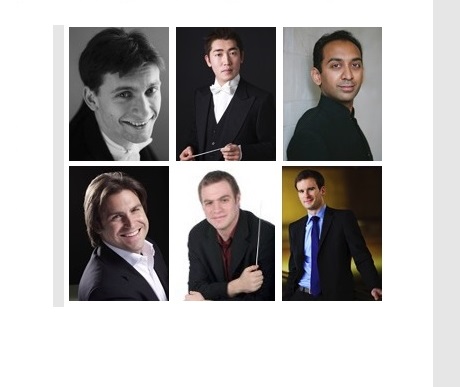
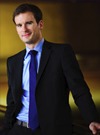
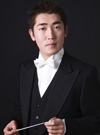
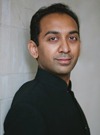
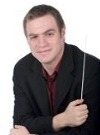
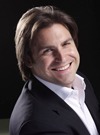

No comments yet.
Add your comment